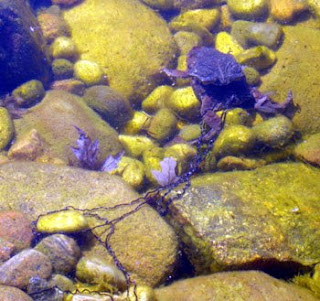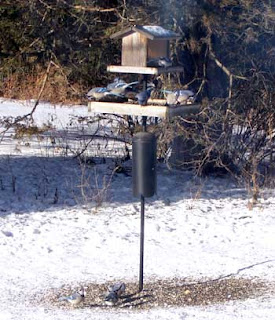
I heard a House Wren calling this morning, too. So, spring is really here.
For anyone interested in phenology, the Toads are really early this year. They usually don't start singing until mid May or later. This year, they're about a month early. Here's a photo of what they're up to in our pond. The eggs are the long, squiggly black strings.

The wildflowers are blooming early, too. Here's a picture of Bloodroot in bloom. It's one of the spring ephemerals. It blooms quickly and then the foliage dies back and the plant goes dormant in late June, only to remerge again the following spring. They're called "Bloodroot" because the inside of the root is red.







 Staring out of our windows into the cold, white winter. But, look at that color on those birds!
Staring out of our windows into the cold, white winter. But, look at that color on those birds!